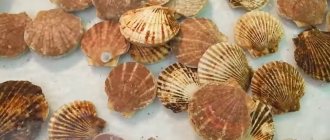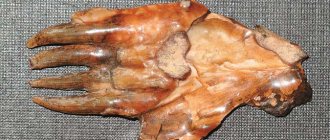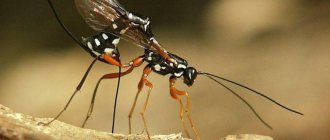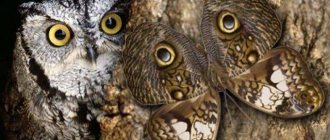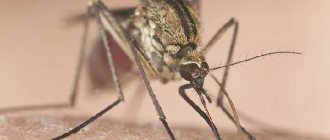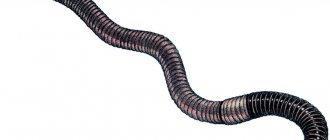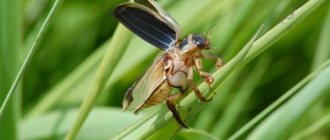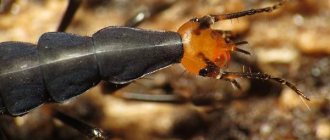How to attract a hovering fly to your site
Because adult hover flies feed on pollen and nectar, planting flowering plants in your area or between crops will attract them and increase the likelihood that they will lay their eggs on infested plants.
We recommend planting plants such as: alisum, aster, coreopsis, daisies, dill, fennel, lavender, marigolds, mint, statice, sunflower, wild mustard and zinnia.
Try to keep plants rich in nectar and pollen always blooming in your area from spring to autumn.
The use of insecticides and other chemicals, especially broad-spectrum ones, should be avoided whenever possible.
Lifestyle, nutrition, reproduction
Adult insects are very maneuverable and can change direction to the exact opposite very abruptly. Thanks to the rapid movement of its wings, the fly often hovers in one place and seems to hover in the air above the flowers, as if choosing which one has the most delicacy.
The larvae are voracious, and the older they get, the more and more actively they eat. They feed mainly on small insect pests - caterpillars, psyllids, spider mites, small butterflies and aphids. They literally suck the latter alive. One syrphid larva can suck up to 200 aphids in one day, and one can imagine how a whole brood of such larvae will benefit the garden. It is on plants affected by aphids that one can often notice a cluster of syrphid larvae. In addition, the larvae can be localized in the nests of other insects, rotten rotting wood, and on large plants.
In the larval stage, flies hoverflies and overwinter. In the spring, pupae appear from them, and by the end of June, young adults appear, starting their years already in July.
During the period of courtship with females, males hover in the air above them and make a sound similar to gurgling. A similar, but slightly different sound can be heard from syrphids at other times, hence their popular name - hoverflies. Mating of these flies can occur right in the air. Also, while hovering, males protect their territory, driving away rivals.
After a while, the fertilized female lays eggs directly on the fruit trees. At one time she can lay 150-200 eggs. The emerging larvae become good crop fighters, destroying harmful insects. Therefore, in order for hoverflies to choose a garden or vegetable garden, they need more umbrella and flowering plants (both cultivated and wild), then there is a chance to acquire such useful neighbors for a permanent time.
Harm and benefits of beeweed
By feeding on pests such as aphids, hoverfly larvae protect fruit trees or shrubs from such parasites. And if they live in mountainous areas where the number of bees is reduced, then syrphids provide a great service to people. They actively pollinate flowering crops, significantly increasing their yield.
On the other hand, some species of wasp flies cause serious damage to bulb crops. Gardeners and flower growers suffer from the larvae of such insects when they damage onions, garlic or bulbs of tulips, daffodils, and hyacinth. Damaged plants slow down their growth and often wither. And harvested onions or garlic, which have been attacked by syrphids, are stored very little and quickly rot.
Life cycle and habitat
Like other flies, soaring flies go through all stages of insect life: egg, larva, pupa, imago (adult).
The life cycle of different species varies and depends on environmental conditions and the availability of food. Under optimal conditions, single white eggs are laid on leaves infested by pests or other suitable food sources. After hatching, approximately 3 days later, the larvae develop into 3 stages of growth into a pupa. If the pupa does not remain for the winter, adults emerge after 1-2 weeks. Up to seven generations can be born within a year.
Stages of development of the syrphid fly.
Water cycle of larval life
Some have adapted to aquatic life in dirty water (including stagnant water) by eating all types of decaying materials. In order to breathe, they expose a long tube at the rear end of their body to the surface of the water. Examples include rat-tail grubs (about 40 species).
Predatory larvae of the murmuring fly
Other larvae hunt for plant lice or aphids. More than a third of hovering flies have aphid-eating larvae (more than 110 species).
Carrion larvae
Some hover fly larvae live in rotting wood, or places where sap flows randomly from living trees (33 species).
Larvae pests of garden plants
Some larvae are agricultural pests, eating roots, stems, and the inside of flower bulbs (about 30 species).
A unique and secretive type of larvae that lives with ants
The larva of the hovering fly Doros profuges lives in the nests of the ant Lasius fuliginosus (Woodborer). There is no reliable information, but one guess is that the larvae either feed on root aphids that have been driven off by the ants, or receive some other benefit from living in their nest.
*if you have any thoughts, write your guess in the comments.
What do fly larvae look like?
After maggots hatch from the eggs, they undergo certain changes over the course of 10-15 days. They are white-yellow or gray in color, with a small dark brown head equipped with two mouth hooks. The tail of such a worm is slightly rounded and has a depression - there are respiratory plates on it, and if you look closely, two dark dots are visible in this place. At a certain stage of its development, the maggot burrows deep into the soil and begins the process of forming a pupa.
It has an oval, oblong shape, color varies from dark brown to red-brown. An adult green fly climbs to the surface of the earth.
Life cycle and habitat
Like other flies, soaring flies go through all stages of insect life: egg, larva, pupa, imago (adult).
The life cycle of different species varies and depends on environmental conditions and the availability of food. Under optimal conditions, single white eggs are laid on leaves infested by pests or other suitable food sources. After hatching, approximately 3 days later, the larvae develop into 3 stages of growth into a pupa. If the pupa does not remain for the winter, adults emerge after 1-2 weeks. Up to seven generations can be born within a year.
Stages of development of the syrphid fly.
Water cycle of larval life
Some have adapted to aquatic life in dirty water (including stagnant water) by eating all types of decaying materials. In order to breathe, they expose a long tube at the rear end of their body to the surface of the water. Examples include rat-tail grubs (about 40 species).
Predatory larvae of the murmuring fly
Other larvae hunt for plant lice or aphids. More than a third of hovering flies have aphid-eating larvae (more than 110 species).
Carrion larvae
Some hover fly larvae live in rotting wood, or places where sap flows randomly from living trees (33 species).
Larvae pests of garden plants
Some larvae are agricultural pests, eating roots, stems, and the inside of flower bulbs (about 30 species).
A unique and secretive type of larvae that lives with ants
The larva of the hovering fly Doros profuges lives in the nests of the ant Lasius fuliginosus (Woodborer). There is no reliable information, but one guess is that the larvae either feed on root aphids that have been driven off by the ants, or receive some other benefit from living in their nest.
*if you have any thoughts, write your guess in the comments.
Larvae
If syrphid imagoes are vegetarians, then the larvae have a very wide food supply. Among the syrphid larvae there are:
- predators that feed on aphids, small caterpillars and other insects without chitinous cover;
- detritivores: habitat: water bodies, food supply - rotting organic matter;
- phytophages that feed on living herbaceous plants;
- xylobionts that live under the bark of trees and feed on rotting wood or tree sap;
- inquilines, living in the nests of social insects and finding food there;
- coprophages that develop in animal manure.
Harm from a murmuring fly
The daffodil fly, or the murmuring fly, causes great damage to the bulbs of daffodils, tulips, hyacinths, gladioli, and the rhizomes of irises.
Before winter, larvae that have not gone through three stages of development are buried in the ground near bulbous plants and overwinter in the bulbs. They eat away the inside of the bulb, and if the plant does not die, then in the spring it grows extremely slowly and does not bloom.
The pest does not like peat, so one of the methods of plant protection is to mulch the planting with peat.
Infected plants can be watered with a solution of pine flour powder, and it is recommended to heat-treat the planting material during the washing and drying process.
What are the main characteristics
The place of insect development directly depends on the species. Some live in anthills and eat young individuals. The body of a representative can be slender or, on the contrary, massive. On average, adult individuals reach a length of 5-25mm. There are no hard hairs on the body that are characteristic of other flies. Small fluff is visible. The color is dark with yellow elongated spots.
The color resembles bees, bumblebees or wasps. The difference is that the hoverfly has only one pair of wings. The peculiar color is needed for protection from birds, which are afraid to attack the insect, suspecting the presence of a sting and poison.
Thanks to the specific structure of the wings, the insect is able to hang in the air in one place for a long time, and also abruptly change direction. Adult insects appear at the end of June. It is at this time that the fly emerges from the pupa.
The main characteristics depending on the stage of development are presented in the table.
| Caterpillars | The length of the caterpillar does not exceed 1 cm. The body color is white. Nutrition directly depends on the subspecies of the representative. |
| Doll | The pupa has the shape of a drop. In appearance it resembles amber. During wintering the color turns brown. In summer, the shell takes on a yellow tint. |
| Imago | Adult representatives have an elongated body. The color is dark, often black. |
The new generation hatches from eggs in August-September.
The pupa then hatches into a full-fledged fly.
Large striped fly
Syrphids, or hoverflies, represent a family of 6,000 species. Outwardly they resemble bees, wasps, and bumblebees. Widely distributed in all regions except Antarctica, desert and tundra zones. The characteristic sound that the wings make is the basis for the name.
cherry fly
The wasp-like fly is distinguished by its harmlessness to humans. It is often observed in vegetable beds with carrots, dill, celery, and parsley. The diet of adult syrphids consists only of flower nectar and pollen. They belong to pollinating insects.
Feeding of syrphid larvae
Hoverfly larvae look like small leeches. The wrinkled body has a green or yellowish color. Mobility is not typical for legless individuals. Meals include:
- spider mite;
- oviposition of parasites;
- aphid.
Physical activity is developed only when hunting aphids. The hoverfly rises, sways from side to side, quickly attacks the victim, and absorbs it. Then, in search of food, the larva moves, trying to roll its body weight.
For your information. Flies, similar to bees, have a beneficial effect on agricultural areas.
The basis of the sirfid menu is plant nectar sugar, which replenishes the insect’s energy reserves. The primary source of protein is pollen, which is required for the proper development and growth of eggs.
The attentive mother hoverfly lays her eggs directly into the aphid nursery.
The period of development of murmuring larvae ranges from 15 to 20 days. The gluttony of young animals is amazing: by the end of their growth they eat up to 200 aphids, destroying about 2000 small insects during their existence.
hoverfly
Note! Syrphid larvae feed not only on plant tissues - the diet of exotics includes processed wood or manure products.
Reproduction
The flight of flies with the wasp color occurs in the last ten days of May - the first days of June. In the middle of the summer season, the mating season of insects occurs. One individual lays up to 200 eggs:
- in grass;
- on the branches of crops;
- on the ground surface.
The location of the masonry is determined by the type of hoverflies. The eggs develop within 8-12 days. Sedentary larvae without legs resemble a greenish, light yellow or pink leech. The thin skin allows you to view the internal organs. At this stage, the hoverfly reaches 1 cm in length.
Depending on the food, the larvae are divided into:
- larvae that live in water bodies are detritus;
- predators that feed on fleas, aphids, and small pests, helping summer residents in the fight against parasites;
- herbivorous species that damage lily bulbs and flower stalks of crops;
- manure and wood from dead trees, which exotic syrphid flies cannot do without.
After feeding and growing for 14-21 days, the insects enter the teardrop-shaped pupal phase. Pupae that overwinter have a brown tint. Summer dolls have a poor tone. After 2 weeks, an adult specimen emerges from the puparia, ready to fly for 1-2 hours. The arrival of cold weather is time for the caterpillars to take cover for the winter.
Varieties
Widespread species include:
- Delia antique, or onion hoverfly. The menu of 1 cm larvae includes the pulp and juice of bulbous crops.
- Temnostoma vespiform, or wasp-shaped hoverfly. The fly resembles a wasp in color and body shape and reaches a length of up to 18 mm. The larvae feed on rotten wood.
- Eristalis, or water syrphid. Lives near bodies of standing water and swamps. The insect has a special trunk to breathe and consume air from the surface.
- Eristalis tenax, or tenacious bee-eater. The 15mm insect resembles a bee with a darker shade.
- Flower fly, or common hoverfly. An insect with yellow stripes, whose length is 12 mm, is a good pollinator. The larvae eliminate garden pests.
- Chrysotoxum. Resembles a large hornet. The dimensions of the individual are 13-18 mm in length. The convex abdomen is covered with yellow stripes that are interrupted in the middle. A distinctive feature is a brownish darkening on the wings in front.
Benefits and harms
The wasp fly does not bite - there is no sting or poison. The benefits and harms are determined by the type of hoverflies.
Attention! The larvae of predatory types of syrphids are defenders of the orchard and destroy parasites.
Hoverfly larvae pollinate flowering plants. This is required in mountainous regions due to a shortage of bees.
Wasp fly - lacks both sting and poison
Herbivorous hoverflies cause problems in the garden, damaging garlic and onions, tulip and hyacinth bulbs, gladioli and daffodils. As a result, infected flowers become sick and dry out.
How to fight
Bulb plantings must be carefully inspected to identify harmful insects and take adequate measures:
- Affected crops should be immediately removed and burned.
- Treat the area with insecticides: Decis, Aktara.
- Maintain crop rotation of flowering plants every year.
- Plant carrots in the garden – their smell will repel onion flies and syrphids.
- Loosening and mulching the soil to avoid compaction will prevent the occurrence of hoverflies.
- The plantings are treated with tobacco dust, red pepper, mothballs, and wood ash to prevent the appearance of female onion syrphids.
- Spray the area with copper sulfate after harvesting garlic or onions.
Curious facts
Interesting facts about murmuring insects:
- Imitation of bees helps syrphids from insectivorous birds. The hatching of larvae occurs during the wasps' flight. Their parents teach them to beware of striped hymenoptera. The period when hoverflies emerge occurs at a time when older children do not risk attacking suspicious flies.
- Male wasp insects hover in the air for a long time, protecting their space and females during the mating season.
- Insects mate in the air.
How to get rid of hoverflies?
To preserve the harvest, you should get rid of the pest in a timely manner. Gardeners recommend using:
- chemicals;
- folk ways.
The control method is selected depending on the number of pests.
Chemicals
If larvae are noticed in the garden bed, they must be promptly disposed of. You can find a huge amount of products in stores. The most popular are:
- "Tiofos";
- "Heptahtor";
- "Fly-eater";
- "Inta-Vir";
- "Tabazol".
Important: when choosing this or that product, you need to study the instructions, otherwise you can destroy not only the larvae, but also the crop
Folk remedies
If there are not yet many larvae in the garden or flowers, you can use traditional methods:
- Water the garden bed with ammonia solution. 5 tablespoons of the substance are added to 10 liters of water.
- Sprinkle the beds with wood ash. You can also use tobacco powder.
- After harvesting, treat the soil with copper sulfate.
- Remove damaged plants and then burn them.
- The hoverfly does not like the smell of carrots, so it needs to be sown next to the onion bed.
- Treat the soil with urea. Add 1 tablespoon of the substance to a ten-liter bucket. One liter of solution is enough per square meter of land.
Important: folk methods have proven themselves over several decades
Control of harmful hover flies
Harmful hover flies cause the greatest damage to onion and garlic plantations. Therefore, you should not arrange beds for these plants in the same place for two years in a row.
The beds where onions and garlic grew must be dug up in the fall and all remnants of vegetation burned. The affected tops are destroyed in the same way.
If larvae are found:
- beds with onions and garlic should be sprayed with an aqueous solution of “Aktara” or “Decis”;
- use infusions of pepper, tobacco or sifted ash. They expel adult hoverflies from the site, and deprive the larvae of food, since they cannot stand the smell of these folk plant protection products;
- mulching and loosening the soil is also a good preventive measure;
- After harvesting, it will not be superfluous to treat the onion and garlic beds with a 3% solution of copper sulfate.
It is important to correctly identify the insect so as not to unknowingly destroy beneficial hover flies, whose larvae eat aphids with such appetite. In this aspect, toxic chemicals are used with caution, giving preference to traditional methods.
Hoverfly family (Syrphidae)
Small or medium-sized flies (length 4-25 mm). Often black, with a metallic sheen of bronze, green or blue. Many other hoverflies are of a completely different color - with conspicuous yellow spots or bands. The shape and body color of such hoverflies are very similar to the color of many stinging Hymenoptera. Slightly pubescent forms resemble wasps, and hoverflies, covered with thick and long hairs, resemble bees and bumblebees. The similarity is further enhanced if the fly has long antennae, a stalked abdomen and a darkened anterior part of the wing.
There are about 6 thousand species in the world fauna, in Russia there are approximately 800 species. Flies feed on nectar and pollen; found in large numbers on flowering plants, especially umbrella plants. In terms of speed and maneuverability of flight, they occupy one of the first places in the world of insects. You can often observe how these flies hang motionless in the air for a long time, from time to time making rapid throws to the sides and just as instantly returning back. The larvae live in bodies of water of varying degrees of pollution (even drainage from livestock farms), in the nests of Hymenoptera, and in plant tissues; predatory forms live openly on plants, eating mainly aphids. They occupy one of the leading places among insect pollinators of plants. Herbivorous larvae, gnawing stems and bulbs, can harm cultivated plants.
Read: Buzz family (Bombyliidae)
On its abdomen there is a wide, light, almost transparent band. Body length 13-17 mm. The larvae of the transparent hoverfly develop in wasp nests, where they feed on the dead larvae of their hosts. Found almost everywhere.
Densely covered with hairs, this fly is very similar in color and pubescence to a bumblebee. The color is highly variable. Body length 11-15 mm. The larvae live in the nests of bumblebees and sometimes wasps, feeding on the larvae of the nest owners.
The lower part of the head of this fly, like all other species of this genus, is extended forward like a beak. Length 8-9 mm. The larvae develop in manure.
It resembles a bee in color and size (length 13-16 mm). Distributed everywhere (except for the Far North) and in some places found in large numbers. The larvae at the end of the abdomen have a very elongated and narrow respiratory tube, somewhat similar to a long tail, for which these and similar larvae of other species and genera of hoverflies received the name “rats.” They live in water, sometimes heavily polluted.
Read: Family of bloodsuckers (Hippoboscidae)
Body length 15-17 mm. Usually found in July-August, especially often on umbrella plants. The larvae live in damp dust in the hollows of deciduous trees.
This hoverfly has a very long abdomen, protruding beyond the ends of the wings for a considerable distance. Length 9-12 mm. The larvae live openly on plants, where they feed on aphids.
You might be interested in:
- Family Drosophilidae, or fruit flies (Drosophilidae)
- Lionfly family (Stratiomyidae)
- Family of carrion flies, or blue blowflies (Calliphoridae)
- Family true flies (Muscidae)
- Bighead family (Conopidae)
- Snipe family (Rhagionidae)
Subscribe to our channels in Yandex Zeni Telegram Diptera
Types of flies, names and photographs
There are 3,650 species of flies in the world, some of which are particularly common:
- house fly
a gray insect native to the Asian steppes. Distributed everywhere, most often near human habitation. Externally, many species are similar to the house fly, but it is distinguished by a special break at the edge of the wings. Under favorable conditions, the insect can live up to 2 months;
Housefly
- hoverfly (syrphid)
in appearance and habits it is similar to a wasp. The insect is distinguished by a black and yellow striped body and transparent wings. The hoverfly feeds on the nectar of flowering plants and is absolutely harmless. The fly got its name from the murmuring sound made by its wings when hovering;
Hoverfly
- green (carrion) fly
An insect with a shiny emerald body that lives near sewage and carrion. To avoid being eaten after mating, the male fly first offers the female some food;
Carrion fly
- common milkweed (tenacious) or bee-shaped milkweed
considered a subspecies of hover flies. A large insect, up to 1.5 cm long, with a dark-colored body covered with hairy pubescence. Beeworm larvae that enter the human body can cause serious intestinal disorders;
Ilnitsa vulgare
- ktyr
a large predatory fly that poses a danger to mosquitoes, midges, bees, and also similar flies. Killing various dangerous insects with a sharp sting and poison, tyri flies bring significant benefits to humanity;
Fly ktyr
- Tsetse fly
inhabitant of the African continent. The main source of nutrition for this dangerous predator is the blood of wild mammals, as well as livestock and people. Tsetse flies are carriers of trypanosomes, which cause an incurable disease that destroys the immune and nervous systems and leads to death.
Tsetse fly. Alan R Walker, CC BY-SA 3.0
Appearance
Adult flies reach a length of 3 to 13 mm, depending on the species. The fly's body is black or brown with stripes (or dots) of white or yellow covering the abdomen and/or thorax. Adult hover flies resemble small wasps. Their yellow or white and black striped abdomens serve to ward off predators. However, they can be distinguished from wasps by their single pair of wings, with vestigial hind wings as balancing organs. Syrphid fly larvae are mucus-like caterpillars that are wrinkled and narrowed at the front. Their color can be pink, yellow, green or brown, and they range in size from 4 to 18 mm in length.
Male and female flies
Like many other flies, males and females often look the same, have the same coloring, size, etc. However, it is always easy to tell the males from the females. Like all other flies, males have large eyes that come together at the top of the head. Females have much smaller eyes and are located further apart. The tiny eyes or sockets are made up of individual cells and are located on the top of the head in a triangle between the large compound eyes.
Differences between female and male Soaring Fly.
A more intrusive method of determining the sex of a babbling fly is to look at the underside of the abdomen; males have bridled, asymmetrical genitalia. The female's belly is pointed with inconspicuous genitalia.
housefly
The housefly is a synatropic insect, that is, it has connected its life with human habitation without becoming a domesticated pet. On the contrary, the person is very belligerent towards an uninvited travel companion. But a person cannot completely get rid of a housefly, although unlike cockroaches, the fly is diurnal.
Like all flies, it has large faceted dark red eyes and two pairs of wings. The second pair, called “haleteres,” helps maintain balance during very intricate flight trajectories. The fly has a “coat” of long, sparse hairs.
She loves a comfortable temperature and at plus twenty-five degrees Celsius she can live for twenty days if she manages not to get hit by a fly swatter. Flies are fertile. In winter they hibernate.
House flies are not able to bite through human skin, so they do not feed on blood, but finish eating after a person, and before eating they dilute solid food with their saliva
Mimicry
As already mentioned, syrphids are very similar in appearance to stinging insects - wasps, bees, bumblebees. The hoverflies seem to be camouflaged as them, and their striped black and yellow coloring helps them in this. But upon closer examination, you can notice the difference:
- syrphids have much shorter antennae (for example, a wasp has antennae up to 1 cm);
- they are smaller than wasps, bees, etc. (excluding especially large species);
- they have 1 pair of wings, while the stinging ones have 2.
But even with these minor differences, nothing prevents syrphids from feeling quite at ease and boldly in nature: their external imitation (mimicry, from the English word mimicry - disguise, imitation) of dangerous stinging insects is so believable that few birds risk attacking them, especially if you have already had a sad experience of contact with a wasp. But all this is despite the absolute harmlessness and even some defenselessness of the syrphids.
Nature has endowed these flies with such a coloring, thanks to which they may not be afraid of attacks from enemies. Hence several more popular names for hoverflies: bee-eater, wasp-fly, wasp fly, etc.
These nimble dipterous insects, whose body color resembles wasps, are easy to find in temperate latitudes. But, taking a closer look at the hoverfly (Diptera) from the family Syrphidae, you understand: this is a real fly. A predatory insect whose larva feeds on both plants and other pests.
Biologists know about six thousand species of syrphids. Most of them live in North America and Eurasia (with the exception of Central Asia). And two species are found even in the subarctic zone. In Africa, South America and Australia, these insects are almost absent.
A fly with a long black body and a sting
The wasp-like insect has a similar appearance to the ground wasp. The predator has a long black body and mustaches. The bug resembles a wasp due to its striped abdomen.
The black and yellow striped fly, like a wasp, is classified as a predator and easily attacks poisonous spiders. Found everywhere. Some representatives even inhabit the tropics. Some tropical species prefer human blood or mammals. They hide in shelters during the day and hunt at night. Distinctive features: extraordinary composure and the ability to watch over the victim for a long time.
The aggressor instantly rushes to attack, thrusts the sting and injects the toxin. The poison instantly paralyzes the victim.
Black and yellow striped fly
Similar behavior is found in the road wasp. The predator lays eggs on the body of the victim. The larvae pierce the abdomen of insects and gnaw out the insides. Before the cycle is completed, the remainder of the beetle or spider is only a bioshell.
Main differences from wasp
The wasp fly differs from dangerous pests:
- the presence of 1 pair of wings, a bee has 4;
- width and dimensions of the wings;
- hovering in the air and changing the direction of flight, thanks to reduced wings - halteres;
- the thinness of the limbs, on which pollen does not accumulate, compared to a bee;
- fine fluff instead of hard hairs on the body of syrphids, like those of a bumblebee;
- wasps belong to non-social insects; some individuals live separately and group only when mating.
Description of the insect
Larva
Externally, the insect in the larval stage resembles an extremely flexible and mobile leech of a greenish tint. Sometimes the body color may be pale yellow or pink. The internal organs of the syrphid are visible through the thin skin. Length up to a centimeter.
The larva actively crawls on plants infected with aphids. Having overtaken the pests, it sucks them out and continues the hunt again. About two hundred aphids are eaten by one larva per day.
There are species of hoverflies that develop in water (shallow puddles), plant stems, decaying manure and rotten wood. Some prefer anthills, where they feed on ant larvae.
The pupa is drop-shaped, resembling frozen resin. Puparium with a dense shell. In pupae going into winter, the color of the puparia is brown. Summer generation of a lighter yellow hue.
Adult
The body can be either slender or massive, depending on the species. The average size of an adult is from 4 to 25 millimeters.
Types of hoverflies
The most common types of hoverflies that can be found in our gardens are useful, and only the onion one is an undoubted pest. Below are examples of the most common flies of this family:
- Onion, in Latin "Delia antique", has a size of up to a centimeter in length. The eggs laid in the axils of the leaves hatch into larvae that damage the bulbs, causing them to rot.
- Aquatic hoverflies, or "Eristalis", feed near stagnant water in small natural pools and marshes. The proboscis on their body, like a diver's breathing tube, helps them breathe under the surface of the water.
- The common hoverfly is a flower fly that reaches twelve millimeters in length. Its larva can eat up to two hundred aphids per day. The common hoverfly is an excellent pollinator. The camera captured her on clover
- The wasp fly is most similar to a wasp, hence its name. Its larvae feed mainly on rotten wood, and the adult grows up to eighteen millimeters in length.
- The hoverfly is a little smaller, only one and a half centimeters long, has a darker color and, as its name suggests, resembles a bee.
Varieties
The following types of these flies are common in our country:
- Eristalis is an aquatic species of hoverfly. The larvae search the muddy bottom of puddles with musty water in search of food. All of them have a “tail” - a special breathing tube that allows you to breathe under water.
- Temnostoma vespiforme is distinguished by its external similarity to a wasp. This species is called wasp-shaped. The fly has a characteristic striped color. The larvae feed on rotten deciduous wood. The fly size is up to 18 millimeters.
- Chrysotoxum resembles a large hornet. The abdomen is convex with yellow stripes interrupted in the center. The adult size is from 13 to 18 millimeters. A characteristic feature is a brown shading in the front of the wings.
- Eristalis is a species very similar to bees. The size of the fly is up to one and a half centimeters. The body is covered with short down. The color is dark. There are narrow yellow stripes on the abdomen. Known as beeweed.
- Delia antique larvae damage onions and garlic. The adult color is dirty gray. Size up to 0.7 millimeters. Females lay eggs in the axils of leaves. The larvae penetrate the rhizomes and eat them away, causing rot.
Fly like a wasp
Hoverflies (lat. Syrphidae) are often found in vegetable gardens and summer cottages, where they actively pollinate flowers on garden and fruit crops.
They are widespread and are found on all continents at positive air temperatures. According to biological classification, scientists place them in the order of short-whiskers and the family of Diptera.
Syrphids use a remarkable ability for mimicry, having an appearance very similar to the stinging insects of bees and wasps, having the same yellow and black striped abdomen, as seen in the photo of the hoverfly, thanks to which they escape from the attacks of birds and predators. Hoverflies are virtuosos in the “flight” business: their ability to hover or loiter in one place, and then break off and quickly fly away, is their distinctive feature. It is due to the unique structure of the wings: one pair is normal, and the second has been reduced over time into club-shaped halteres, which helps the insect maintain balance and control stopping in flight.
Male wasp flies have their own territory, which they vigilantly guard, periodically hovering in space. Even mating with females occurs in flight.
Externally, hoverflies resemble bees or wasps: they have an elongated body with a yellow belly and black stripes, some species have a black body with yellow spots.
Description of the insect
There are about 6,000 species of hoverflies in nature, 800 of which live in the territory of the former USSR. In the adult state, the insect has a length from 4 to 25 mm. Body color is yellow-black. Externally, insects look like wasps. Thanks to its color and shape, the fly scares away enemies.
Important: mimicry is a natural property of animals that allows them to camouflage themselves by “taking on” the appearance of others. The female is capable of laying up to 200 eggs
It all depends on weather conditions and temperature conditions. Mucha places them on:
The female is capable of laying up to 200 eggs. It all depends on weather conditions and temperature conditions. Mucha places them on:
- grass;
- plant stems;
- on buds and trees.
The location of the eggs directly depends on the type of insect. On the 5th day, larvae are born. Outwardly, they resemble maggots - the offspring of blowflies. The larvae feed depending on the species:
- dead plant tissue;
- detritus;
- aphids;
- bulbs (mostly flowers).
The larvae of some hoverflies are beneficial to humans. Therefore, before fighting them, it is recommended to carefully study the insects.
What you need to know about flies
There are more than 4 thousand species of this insect in the world. All of them, without exception, can cause discomfort and cause some harm to humans, but their role is important in the food chain of many animals and especially birds. In the territory of the former CIS, exophilic and endophilic flies are most often found. Both of them can live in a person’s home, causing considerable discomfort.
For example, in the Wohlfarth fly, which we are used to seeing near agricultural buildings, the larvae are carnivorous, and in the most advanced cases they can lead to disability. Green, shiny flies are no less dangerous; they are called meat flies.
Tahina is considered to be such a species - this insect destroys caterpillars in gardens and fields. But the ktyr, with its sharp sting and poison, destroys mosquitoes, midges and other blood-sucking insects. There are blood-sucking representatives of the genus Diptera, which cause certain harm to people and animals. They are called bloodsuckers of horses, dogs and deer. The bite of such individuals cannot go unnoticed - the fly digs its sharp proboscis into the body and drinks blood. Their larvae, accordingly, are carnivorous and require a living organism as a home for development.
The developmental stages of these arthropods are fleeting; in literally 15-20 days, the fly turns from an egg into an adult, capable of laying new eggs. It is worth saying that in one clutch it is capable of producing from 100 to 150 eggs. Fly larvae appear on the fifth day from small white eggs, the size of which is no more than 1.2 mm. After a week, these white worms change their appearance and turn into a kind of pupa. Their skin takes on a dark brown color and becomes significantly rougher, which provides protection for the insect while it is inside. After 10 days, an adult emerges from the pupa, which is able to begin mating and after 2-3 days lay new eggs.
The fly can lay larvae anywhere - it can be manure, food or lost food, garbage, or even a wound on the animal’s body. It all depends on the type of dipteran and its mode of life. The fly larvae, hoverflies, are capable of eating more than 2 thousand aphids over the entire period of their development.
Classification of flies
There are 40 thousand species of flies in the world, which can be divided into three large groups:
- settlement: live in close proximity to humans, are not able to survive in the wild; house flies;
- semi-settlement (facultative-settlement): can live both near humans and in the wild; blow flies;
- grazing: live in livestock droppings on pastures, fly into populated areas; dung flies;
Flies are also divided into those that feed:
- fruits and berries: melon and garden;
- vegetables: lily, cabbage, garlic, cucumber, sprouts;
- flowers: peony;
- blood of animals and people: black (April), ;
- rot and carrion: green, domestic, dung, gray meat;
- other insect pests: hoverflies, blackbirds;
Drosophila fly
The Drosophila fly turned out to be much more convenient for scientific research into gene behavior than Pavlov's dog. Today this fly is one of the living organisms most studied by man. The development of the chromosomal theory of heredity and sex genetics owes to this fly. Its short life cycle, small size of the insect, and ease of reproduction have made the fly a model object for genetic research.
In the wild, Drosophila fly larvae develop in vegetables and fruits, for which they are also called fruit flies. Sometimes they choose fungi or decaying remains of plants and microorganisms for development. Adults feed on plant sap, rotting fruits and vegetables.
Harm from a murmuring fly
The daffodil fly, or the murmuring fly, causes great damage to the bulbs of daffodils, tulips, hyacinths, gladioli, and the rhizomes of irises.
Before winter, larvae that have not gone through three stages of development are buried in the ground near bulbous plants and overwinter in the bulbs. They eat away the inside of the bulb, and if the plant does not die, then in the spring it grows extremely slowly and does not bloom.
The pest does not like peat, so one of the methods of plant protection is to mulch the planting with peat.
Infected plants can be watered with a solution of pine flour powder, and it is recommended to heat-treat the planting material during the washing and drying process.
Insect biology
The hoverfly insect family belongs to the order Diptera, unlike wasps and bees, which have two pairs of transparent wings. They are distributed throughout the globe and are found in almost all places except the desert and tundra; in Russia alone there are more than eight hundred species.
The color of insects of this family is black and yellow with slight variations observed in all species. Imago, adult hoverflies feed on pollen and nectar of plants, but the larvae of hoverflies have a wider palette of tastes.
Development
Adult insects appear in the garden in late spring. Mating of hoverflies occurs in mid-summer, and their active years last until early August. Each female is capable of laying up to two hundred white eggs. She places them on grass, plant stems, directly in the soil, and on tree branches. It depends on the type of insect. For example, the onion hoverfly, a pest of this crop, lays eggs on onion feathers. After ten days, the eggs hatch into larvae.
Larva
All fishermen and their wives are well aware of the larva of the blowfly - maggot. The hoverfly larva is the same maggot, only slightly smaller in size, only a centimeter long.
The larvae feed depending on the species:
- predators - aphids and psyllids;
- herbivores - bulbs;
- aquatic - detritus;
- woody - dead plant tissue, including manure.
Based on what has been said, we see that these insects are mainly useful, but there are also garden and vegetable pests.
blowfly
Blow flies get their name from their choice of animal carcasses as breeding grounds. Depending on the color of their back, they can be gray, green, or blue.
Gray blow flies
Gray blowflies are similar in appearance to regular houseflies, but are larger in size, although not always. While the housefly has four black stripes on its back, the gray blowfly has black spots in the form of stripes or checkers. The eyes, as a rule, like those of house flies, are bright red.
The name itself speaks about the inclinations of flies. They come in two colors: green and blue with a metallic sheen.
Unlike gray blowflies, carrion flies lay white eggs, looking for suitable carrion for them. The eggs hatch into smooth and hairy larvae. Hairy larvae are active predators; they eagerly eat smooth larvae that are born earlier. In about three weeks, the eggs will develop into adults, undergoing three molts during the larval stage and then pupating.
Peculiarities
Hover flies resemble menacing wasps and bees in appearance. Thus, the insect has adapted during evolution. Birds, seeing an insect with such coloring, do not try to “dinner” with such prey.
Hover flies are very interesting insects. In flight, their virtuosity is inimitable. The insect is capable of flying for a long time. They fly very fast. And at the same time, if necessary, they can freeze in one place.
Male hover flies are engaged in protecting “their” territory. They drive away other “claimants” to the territory by hovering in the air for a long time. The opponent, seeing that the area is occupied, flies to another place. Virtuoso fliers, hoverflies can remain in a state of flight for a long time. Insects can hover for a long time and then suddenly change direction of flight. Even the mating process is carried out by many individuals in flight.
The hoverfly's ability to stay in the air for a long time is due to the structural features of its wings. One pair of wings performs normal functions, the other pair has been deformed in the process of evolution, turning into club-shaped halteres. This organ helps the insect maintain balance and control the direction of flight.
In nature, there are several species of hoverflies. Distributed in:
- Europe;
- Central Asia;
- North America.
Sometimes these insects are found even in the subarctic zone.
Prevention and safety measures against flies
The basic rule of hygiene always remains in the first place, which concerns not only washing your hands, but also the proper handling of food before eating.
It is important to keep household items and utensils in proper condition. If food remains on the table in the summer, it must be covered with a special lid, mesh, or placed in an airtight container.
If flies enter the house, it is necessary to carry out special treatment using repellents. If an egg laying site is discovered, it must be thoroughly treated with chlorine-containing agents and chemical aerosols against these insects.
It is necessary to take care of the area where the garbage container is located - this area must be kept clean. Outdoor toilets must be equipped with special outlets for water flushing and basic cleaning of the premises. For barns and other premises intended for keeping livestock, there are special traps for winged pests. These are sticky tapes, hanging feeders with a sticky bottom that catch insects.
Follow basic hygiene rules, concentrate on the condition of products and methods of storing them, carry out the necessary treatment of premises from harmful arthropods - all this will help protect your home and the people living in it from discomfort and the danger of contracting infectious diseases. Wasps are famous for their bright colors, aggressive behavior, love of sweet foods and painful stings.
However, in nature there is an insect similar to a wasp, the characteristics of which are exactly the opposite. The only thing that connects him with the stinging creature is his appearance. Otherwise, it is a completely harmless and peaceful creation.
Wasps are famous for their bright colors, aggressive behavior, love of sweet foods and painful stings. However, in nature there is an insect similar to a wasp, the characteristics of which are exactly the opposite. The only thing that connects him with the stinging creature is his appearance. Otherwise, it is a completely harmless and peaceful creation.
Commercial use
The hovering fly is used for commercial purposes, because why use chemicals when there is a natural enemy of many pests, which is capable of producing enough offspring in a short time to destroy all the aphids on the site without using even 1 gram of poison.
Do Hover flies sting or bite?
Hover flies can't sting or bite, but when they lick you, you can feel it and you might think you're about to be bitten, but they're just after your sweat.

